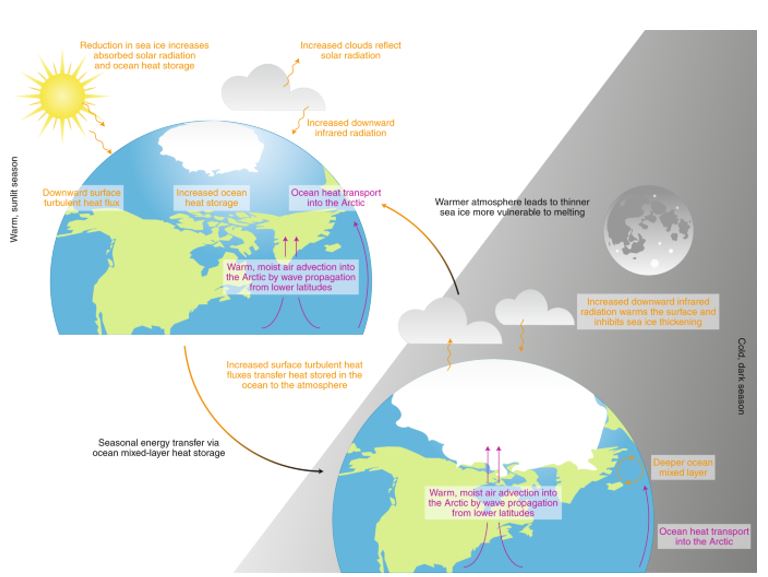

Extreme cold still happens in a warming world – in fact climate instability may be disrupting the polar vortex
Extreme cold still happens in a warming world – in fact climate instability may be disrupting the polar vortex
Context
While the world can expect fewer of severe cold events in the future, many regions need to remain prepared for exceptional cold when it does occur.
Arctic Cold Blast Hits the US: Understanding the Science behind Severe Winter Weather
I. Severe Winter Weather Grips Much of the US
- Over the past few days, an extremely cold Arctic air mass has swept southward across much of the US.
- Daily low temperature records have been broken from Montana to Texas.
- Tens of millions of people have been affected bydangerously cold temperatures, heavy lake-effect snow, and snow squalls in the Great Lakes and Northeast regions.
- The occurrence of severe cold events is often associated with disruptions or changes in the stratospheric polar vortex, which influences the behavior of the polar jet stream.
II. Link between Stratospheric Polar Vortex and Jet Stream
- Jet Stream Meandering:The polar jet stream, which separates Arctic and temperate air, dips southward during severe cold events.
- Stratospheric polar vortex:Changes in the stratospheric polar vortex, located even higher above the jet stream, can lead to the distortion and southward movement of the jet stream.
- Understanding the connection between the stratospheric polar vortex and the jet stream helps explain the dynamics of Arctic cold blasts reaching lower latitudes.
III. Global Warming and Severe Cold Events
- Extreme temperatures:Despite experiencing the hottest year on record, the US faces severe cold events.
- No single weather event can prove or disprove global warming.
- Studies indicate a decrease in the number of extreme cold events with global warming.
- While global warming leads to a decrease in extreme cold events, it doesn't eliminate them entirely. The complexity of atmospheric patterns plays a role in occasional severe cold outbreaks.
IV. Arctic Amplification and Vortex Disruptions
- Arctic amplification:Research suggests that Arctic amplification, linked to global warming, may contribute to stratospheric polar vortex disruptions.
- For e.g. the February 2021 cold wave in Texas was associated with a stretched stratospheric polar vortex.
- Arctic amplification may influence the intensity and frequency of severe cold events, showcasing the interconnected nature of global climate systems.
V. Preparing for Exceptional Cold Events in a Warming World
- Decline in Severe Cold Waves:While the number of severe cold events is decreasing, their intensity may not be correspondingly decreasing in some regions.
- Interconnected phenomena:Enhanced understanding of the connections between Arctic conditions, the stratospheric polar vortex, and surface weather patterns is crucial for preparedness.
- Despite the overall decrease in severe cold events, regions must remain prepared for exceptional cold occurrences. A comprehensive understanding of the influencing factors is essential for effective climate adaptation strategies.
Way Forward:
The recent Arctic cold blast in the US prompts a closer look at the intricate relationship between the stratospheric polar vortex, jet stream dynamics, and global warming. While global warming influences the overall trend of fewer severe cold events, the complexity of atmospheric interactions highlights the need for continued research to enhance climate resilience and preparedness for extreme weather events.





